The subtleties of choosing a poncho towel
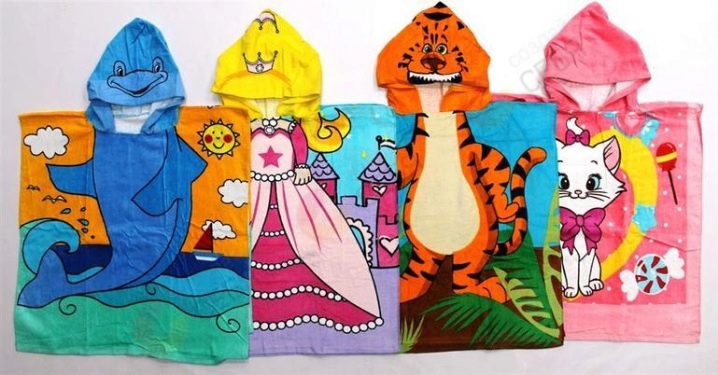
The towel is perhaps the most demanded of the basic necessities. And how many varieties of it exist - and bath, and kitchen, and beach. This article will talk about another type - a poncho towel.
This is a very convenient innovation for children.
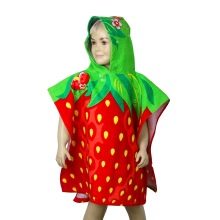

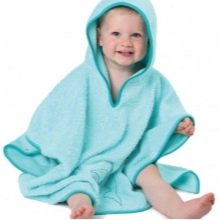
Peculiarities
A poncho towel is essentially a hooded towel. After taking a bath or shower, the baby should be wrapped so that the temperature jump does not affect the well-being of your baby. And the very feeling of cool air after the warmth of water is not very pleasant for children. Sometimes it takes several sheets to cover a wet child from head to toe. But it does not work well to fix them on the child. He fidgets, moves, and the towels naturally swing open.
In this situation, the use of a hooded towel is relevant. It protects against temperature jump, absorbs water well from the child's body and hair, protects against drafts, and the delicate fabric wraps the skin comfortably. When bathing in the fresh air, it will also protect your child's delicate skin from excessive sun exposure. Believe me, wrapping your baby in a poncho towel, you yourself will want the same for yourself.



Currently, there are a huge number of products on the market for all ages. You can choose any design, color, or you can sew such a poncho towel with your own hands. Believe me, there is nothing difficult in this.
How to sew with your own hands?
First you need to decide on the size of the future product. To do this, you need several measurements:
- head circumference (OG) - for a hood pattern;
- arm span - for the width of the product;
- from collarbone to ankle - for length.
Next, select the fabric and edging material. For sewing any towel, it is necessary to select natural fabrics, since only they have a high ability to absorb water.
Experts recommend opting for terry textiles with long pile (terry).

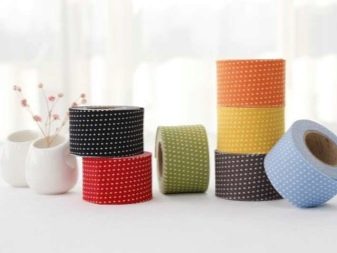
The amount of material required is determined simply - multiply the length of the future product by 2 and add half the measurement of the head circumference. It is advised to use a braid or a satin inlay as an edging (it will take about 6 m).
Now let's get down to sewing. First, transfer your measurements to a piece of fabric. Cut two lengths of the garment from a piece of cloth. In width, the pattern should be the size of the span of the arms. If there is a surplus, cut it off as well. Round the edges of the back and front, that is, the corners of the resulting rectangle. The pattern of the hood looks like 2 squares, the side length of which is ½ OG.
To cut the neckline of the product, fold the main pattern along the length and mark the center. From it, on the front of the future poncho, draw a semicircle with a radius equal to a quarter of the OG. Cut it out carefully.
Sew the hood pieces together. Trim the edges.
Make a buttonhole with 5 cm of edging material. Sew it in the middle of the back collar. Next, sew the hood and the main piece. Trim the edges of the nearly finished poncho towel with tape or tape.
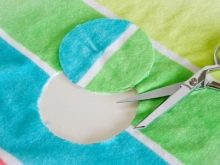
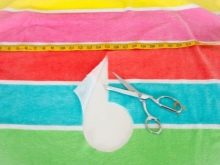
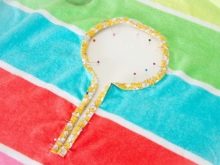
Sew the hood pieces together. Trim the edges.
Make a buttonhole with 5 cm of edging material. Sew it in the middle of the back collar. Next, sew the hood and the main piece. Trim the edges of the nearly finished poncho towel with tape or tape.
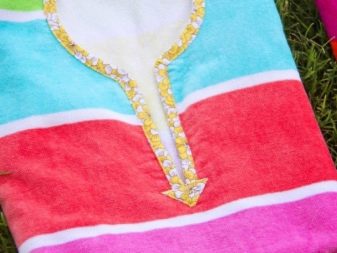

Care of the product
Cotton terry fabric is very easy to maintain.
- It does not shrink, it can be washed both by hand and in a typewriter.
- The poncho towel must be washed and ironed before use.
- Observe the required washing regimes (for colored and light-colored items) to prevent shedding of the product.
- Use fabric softener before the end of the wash to keep the towel soft and delicate.
- For hand wash, add table salt to the final rinse water and let sit for a quarter of an hour. Then rinse it well. This will allow the terry to remain soft for a long time, while disinfecting it.
- It is better to dry the product in the fresh air in the shade.
- Ironing must be wet or steam.
Try it and see for yourself that a poncho towel is a must for both children and adults.
A master class on sewing poncho towels in the next video.













The comment was sent successfully.